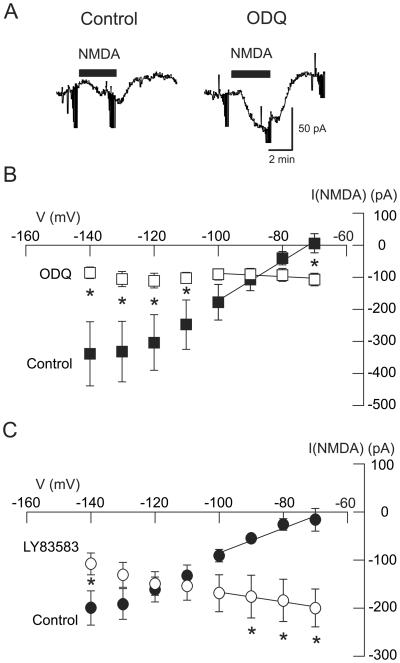Figure 7. The NMDA-evoked K-ATP conductance increase requires activation of a cGMP-dependent pathway.
A, Current traces show that the guanylyl cyclase inhibitor ODQ (100 μM) greatly increased the inward current evoked by NMDA (20 μM) recorded at −70 mV. B, Summarized I-V plots show that the increase in conductance evoked by NMDA is significantly antagonized by ODQ (n = 6). C, Summarized I-V plots show that the selective guanylyl cyclase inhibitor LY83583 (20 μM) significantly antagonized the conductance increase evoked by NMDA (n = 5). Asterisks indicate significant differences (P < 0.05, two-way repeated measures ANOVA with Holm-Sidak pairwise comparison test).

